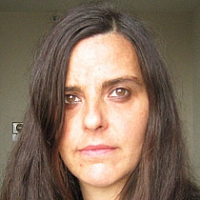
© Rineke Dijkstra
MMK Museum für Moderne Kunst Domstraße 10 60311 Frankfurt/Main Allemagne
The most comprehensive exhibition on the Dutch artist to take place in Germany to date.
Rineke Dijkstra is one of the world’s most well-known photo and video artists. At the MMK, she has assembled all of her video installations for the first time, among them two world premieres: They are supplemented by photographic workgroups revolving around how young people come of age in a society shaped by conventions and codes. The two world premiers are “Dress Rehearsal” (2006) and “The Power House”(2007/08). The recordings of the latter video were made in the former Power House Gallery in Memphis. The young dancers, Monica and Maneka, are shown dancing in a white studio set. During the dance sequences they repeatedly lose concentration, break the continuity of their dancing and interrupt the filming. The neutral white background in the video images and the presentation in the form of four small rear projections closely aligned side by side give the video sequences the appearance of sketches or animated drawings on paper.
Dijkstra’s first two video works, “The Buzz Club” and “Annemiek (I wanna be with you)”, were executed in Holland and the UK in 1996/97. They show young people reaching the threshold to adulthood under the influence of the present day pop and youth culture. For “The Buzz Club“ Dijkstra filmed young clubbers at the Buzz Club in Liverpool and the Mystery World discotheque in Zaandam, Netherlands. The video footage, which for the installation was mounted for double projection, was taken in front of a temporary white studio backdrop while the club was in operation.

© Rneke Dijkstra
Following ten years of exclusive concentration on photographic work, Dijkstra returned to the moving picture medium in 2007. Since then she has produced a number of new video installations investigating the act of observation and the search for identity in today’s society. Within this context she succeeds in capturing individual personality – in its physical as well as social development – in striking images. Yet however firmly those images are rooted in the present, they surprise us again and again with references to works dating from various periods in the history of art. The exhibition highlight is the largescale four-channel video projection ”The Krazyhouse”, recorded in 2009 at the Liverpool Club bearing the same name: a portrait – as dynamic as it is moving – of five young people and how they express themselves through dance. Five young people, encountered by Dijkstra during her nocturnal explorations of the Liverpool club scene, each dance alone to their favourite music against a brilliant white background. The five sequences are projected in succession onto each of the four walls of the exhibition space in turn. The young adults differ markedly from each other in their styles of dance and music, their expressiveness and their reactions to being filmed. In addition to the photos she made in the context of her video installations, the MMK will also be showing other photo series by the artist, for example “Almerisa”, consisting of eleven individual portraits. Dijkstra began the series in the Dutch city of Leiden in 1994, when the subject – a Bosnian refugee – was just five years old. In 1994 Dijkstra started to make portraits of the Bosnian refugee child, who was then five, in the Dutch city of Leiden. At
irregular intervals between then and 2008 she created eleven portraits. They trace Almerisa’s personal development from shy little girl to confident young mother. At the same time the external changes in her clothes and domestic surroundings document Almerisa’s gradual integration into a modern, Dutch society. At the MMK, the portraits of Almerisa sitting on a chair are grouped around Reiner Ruthenbeck’s “Overturned Furniture” from the museum collection in a room which is thus a representative example of the overall exhibition concept: for the presentation, Dijkstra selected some one hundred works by various artists from the MMK holdings, which she juxtaposes with her own works. Within that context, she pursues analogies with regard to content and form alike, and interlinks thematic, conceptual, narrative and political references. “In this way, Dijkstra associates her work quite deliberately with the art production of the 1960s while at the same time taking a very personal look at the MMK collection. New perspectives on familiar classics in our holdings thus open up for us as well”, remarks MMK director Dr. Susanne Gaensheimer. In addition to works by Andy Warhol, Douglas Gordon, Isa Genzken, Tobias Rehberger, Thomas Bayrle, On Kawara, and many others, at the artist’s request a composition by Pablo Picasso is on view: the famous Weeping Woman, on loan from the Tate, served as the source of inspiration for two of Dijkstra’s most recent video works and as the point of departure for the exhibition. In the three-channel video work “I See a Woman Crying (Weeping Woman)”, a Liverpool school class describes and interprets Picasso’s famous painting. As the children contemplate the work, three cameras scan their faces without ever once capturing the painting in question. “One by one, the children – drawing on their own experiences – begin interpreting the fate of the ‘weeping woman’. A self-portrait of the group thus emerges from their contemplation of the painting”, exhibition curator Peter Gorschlüter explains. The video installation “Ruth Drawing Picasso” is likewise related to Picasso’s painting. Ruth, a girl dressed in a school uniform, is seen drawing the Weeping Woman. The camera is set up in such a way as to convey the impression that Ruth is looking into the viewer’s space – and indeed directly at her vis-à-vis – as she concentrates on the famous work.
Photo and vignette © Rneke Dijkstra

